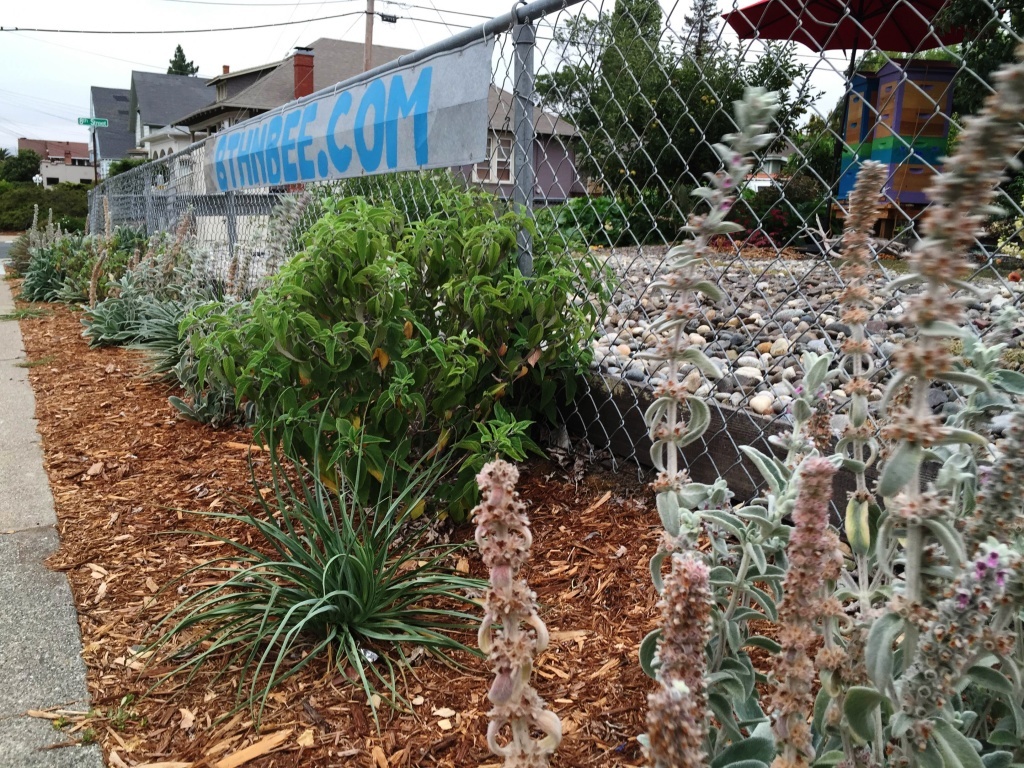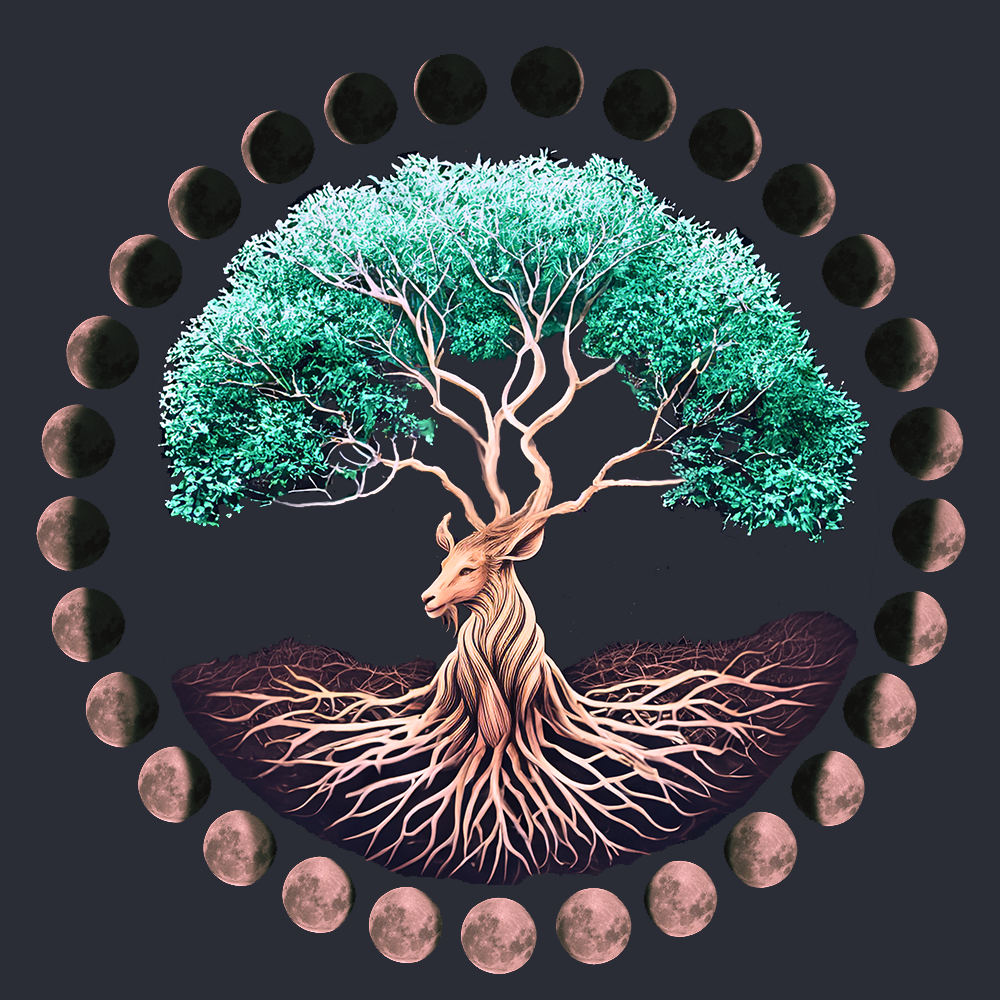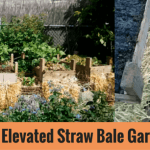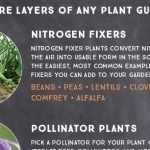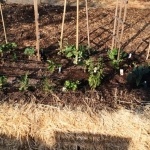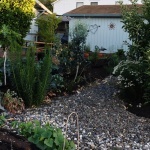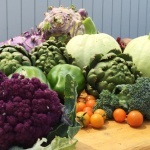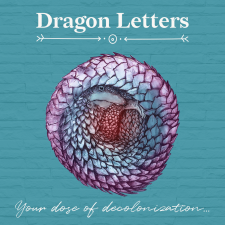Welcome to the 8th & Bee Homestead, our slice of urban food forest homestead-goodness. From 2014-17, we rented a single-family home on an approximately 1/8th acre lot in Petaluma, CA.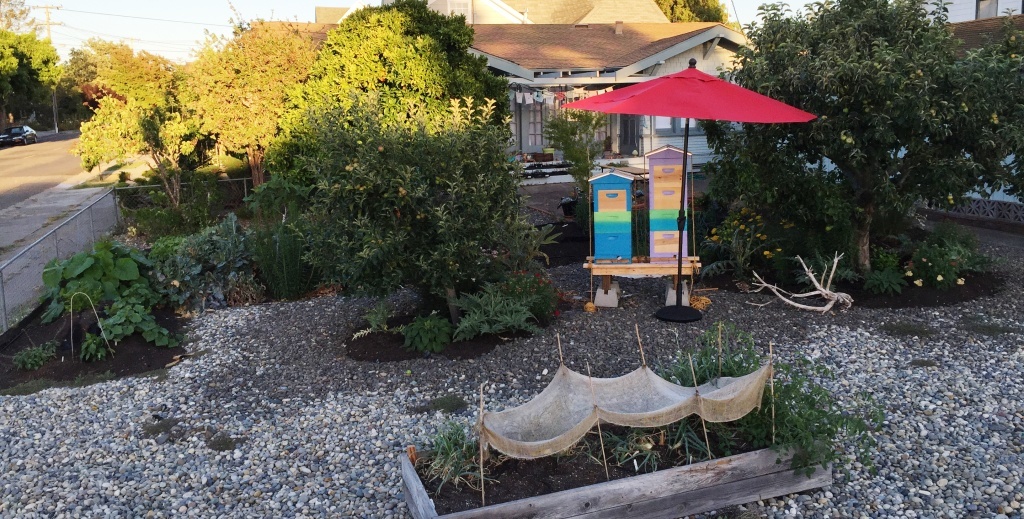
The 1928 Craftsman home was previously owned by George and Mary Reynolds for more than four decades, where they raised a family and were pillars of our community. When we previously lived in this West Petaluma neighborhood, we knew George to be an avid gardener. After his passing a couple years back, the gardens gave way to landscaping rock for easy maintenance.
We moved in on September 1st, 2014 and adopted the property’s three mature fruit trees, a few feral bushes and random greenery — and a whole lot of little rocks. 🙂 From that, we built a thriving food forest and homestead project that brought us together with so many wonderful neighbors and hopefully provided a model of food fertility and self-reliance.
Ours is a great model for renters like us, a space with the leeway to grow food and homestead, working within some constraints. Here’s a quick visual tour. If you’re in the neighborhood, stop on by! We love talking about the space. 🙂
The Hugel
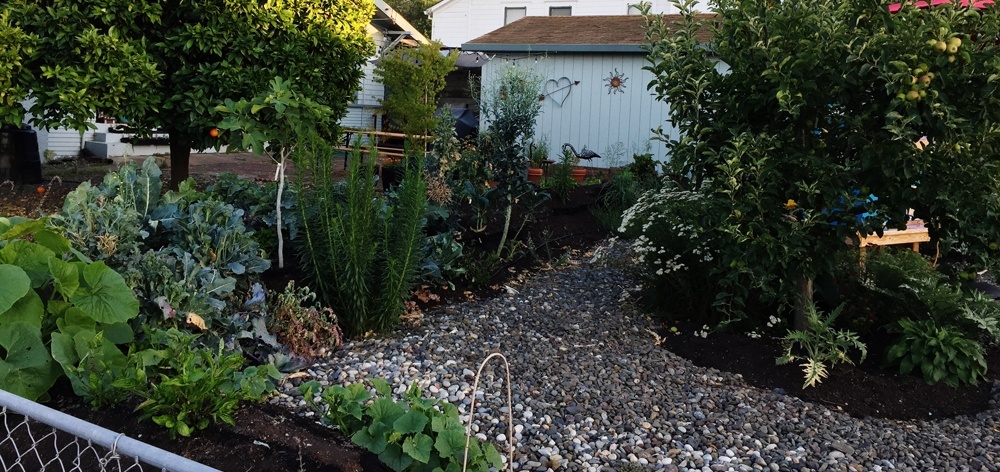 The centerpiece of our homestead. Hugelkultur, (sounds like hoo-gull) loosely translates as “hill culture” from German and is a great option for almost any size space. Built on a foundation of logs and twigs, it captures and holds water, and the wooden core breaks down over time to rebuild soil. We’ve (and by “we”, we mean Jaimey 🙂 ) moved and creatively relocated more than 250 cubic feet of landscaping rock to put in this T-Shaped food forest. Throughout each growing season we rotate plantings in and out, experimenting with companion plantings, and providing forage for our bees. It constantly teaches us about the relationships between land, water, and sky.
The centerpiece of our homestead. Hugelkultur, (sounds like hoo-gull) loosely translates as “hill culture” from German and is a great option for almost any size space. Built on a foundation of logs and twigs, it captures and holds water, and the wooden core breaks down over time to rebuild soil. We’ve (and by “we”, we mean Jaimey 🙂 ) moved and creatively relocated more than 250 cubic feet of landscaping rock to put in this T-Shaped food forest. Throughout each growing season we rotate plantings in and out, experimenting with companion plantings, and providing forage for our bees. It constantly teaches us about the relationships between land, water, and sky.(Want to build your own? See: Do You Hugel?)
The Trees of Our Urban Food Forest
The homestead has been watched over by three mature fruit trees for multiple generations:
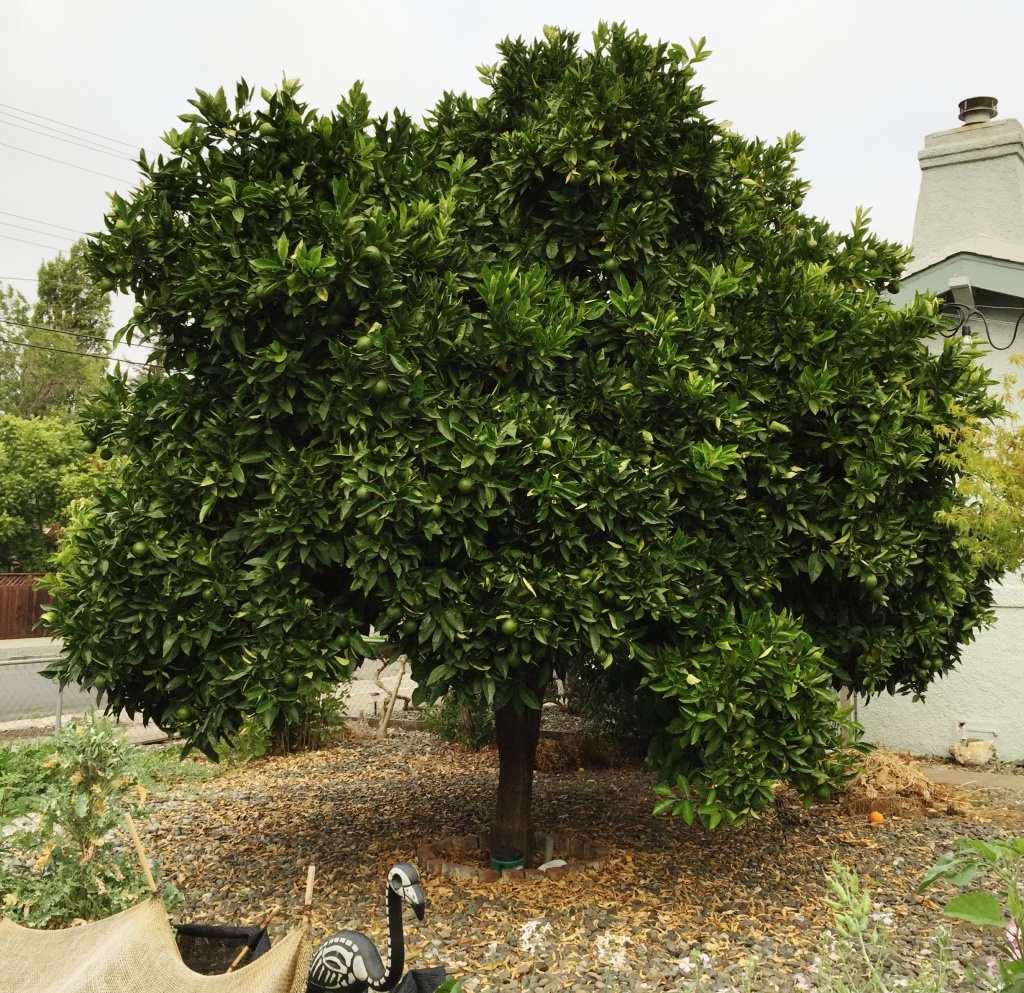 A beautiful, lush navel orange tree, providing shade and an almost endless supply of oranges to gift to the neighborhood.
A beautiful, lush navel orange tree, providing shade and an almost endless supply of oranges to gift to the neighborhood.
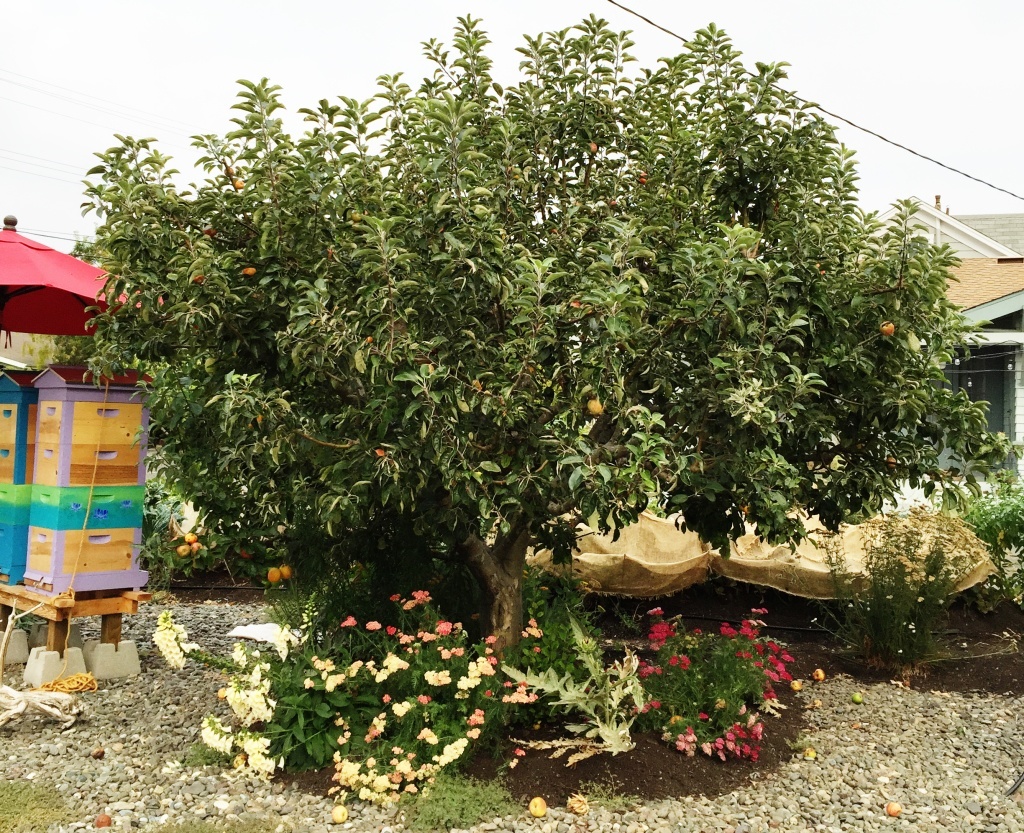 An 40+ year old Gravenstein apple tree with five varieties grafted onto it. We cleared rocks and planted a ring of artichoke, yarrow, and comfrey — the big three companion plants beneficial to apple trees.
An 40+ year old Gravenstein apple tree with five varieties grafted onto it. We cleared rocks and planted a ring of artichoke, yarrow, and comfrey — the big three companion plants beneficial to apple trees.
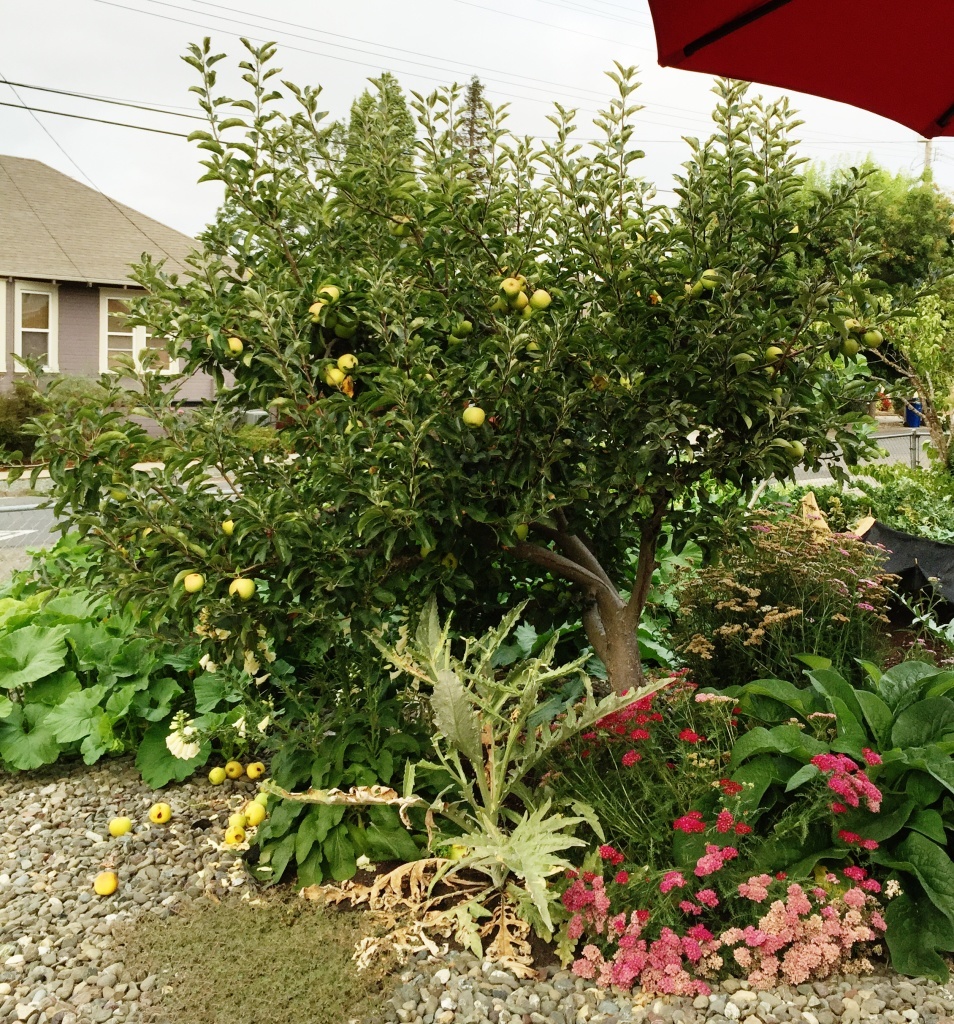 A 20+ year old Golden Delicious apple tree, which yielded an abundance of juice-turned-cider in our first harvest autumn. We have another artichoke-yarrow-comfrey ring of beneficial companion plants circling this tree.
A 20+ year old Golden Delicious apple tree, which yielded an abundance of juice-turned-cider in our first harvest autumn. We have another artichoke-yarrow-comfrey ring of beneficial companion plants circling this tree.
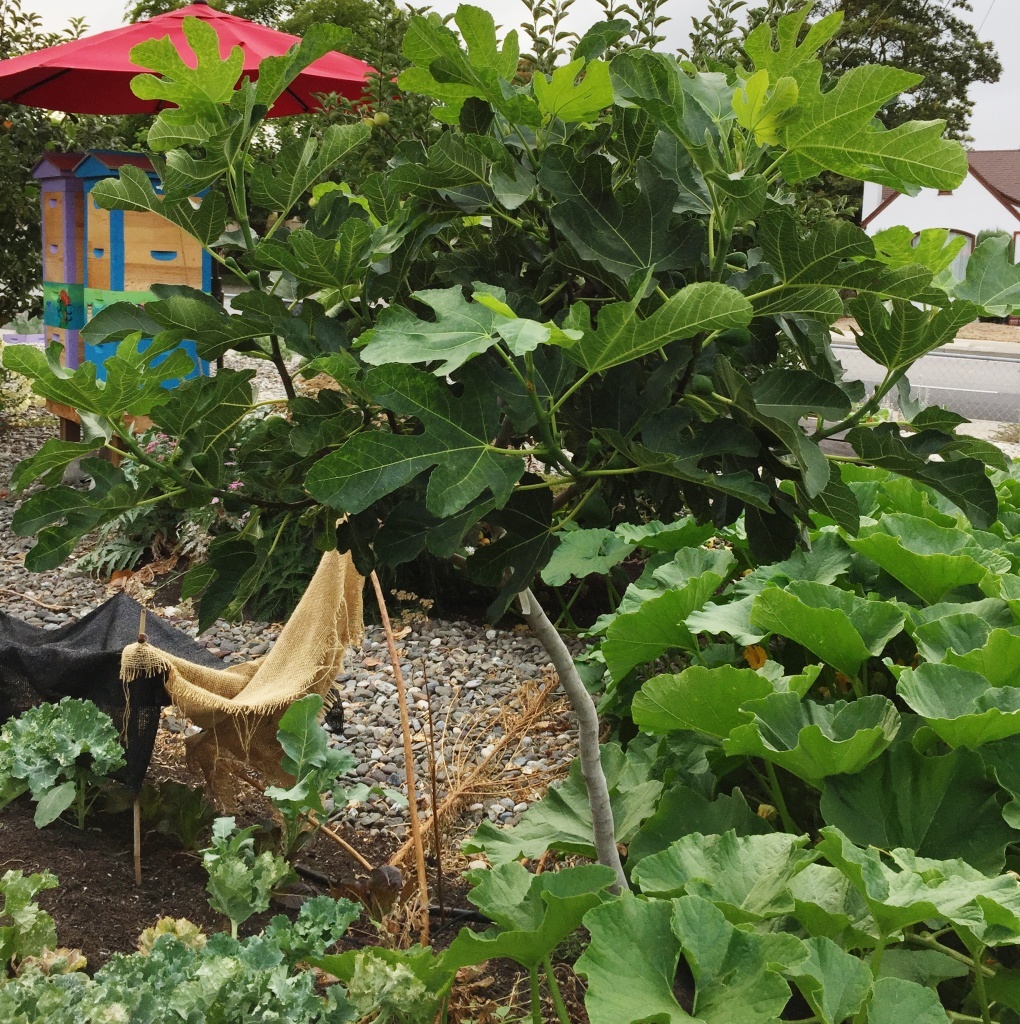 A young fig tree, planted in the heart of our hugelkultur bed.
A young fig tree, planted in the heart of our hugelkultur bed.
Honorable Mention: The front interior corner of lot includes a bottlebrush tree, which sheds like a long-haired cat in Summer, but the hummingbirds love it.
The Bees
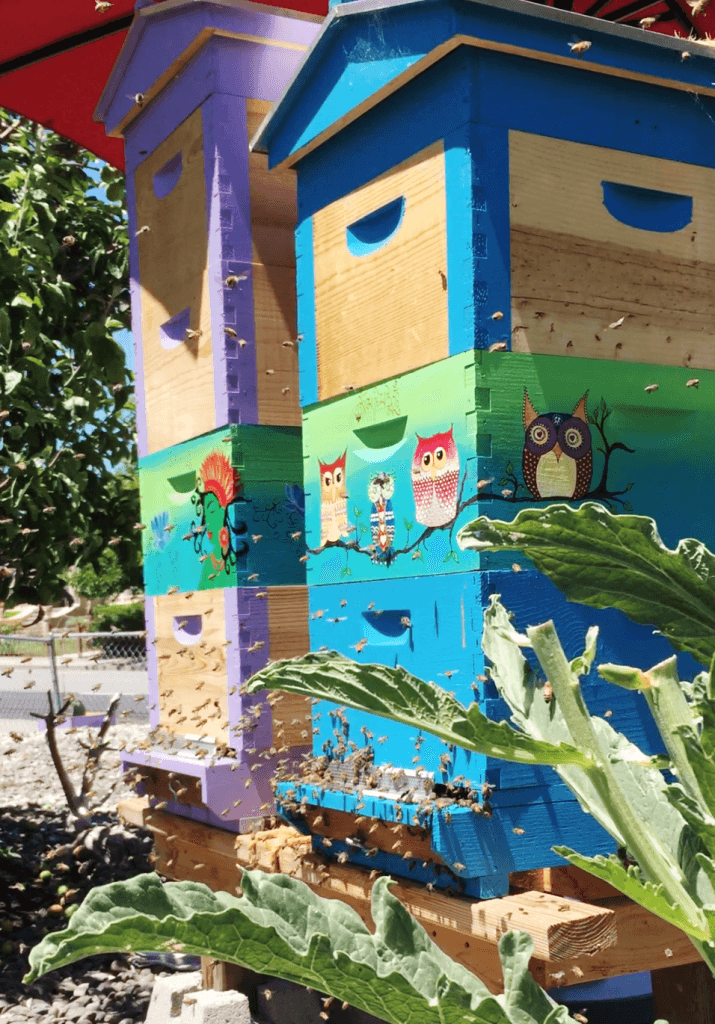 Protect the pollinators and save the bees! The City of Petaluma allows for up to two colonies in residential yards, and Ixchel’s long-standing wish to be a beekeeper came true in early 2015. Since setting up the initial nucs (short for nucleus). Between the trees, the hugel, and our edge plantings, we provide plenty of bee forage throughout the property and our neighbors comment frequently about how much more productive their own fruit trees have been. The big question on everyone’s mind — when will we have honey for sale? (Answer: Sometime in 2016 🙂 )
Protect the pollinators and save the bees! The City of Petaluma allows for up to two colonies in residential yards, and Ixchel’s long-standing wish to be a beekeeper came true in early 2015. Since setting up the initial nucs (short for nucleus). Between the trees, the hugel, and our edge plantings, we provide plenty of bee forage throughout the property and our neighbors comment frequently about how much more productive their own fruit trees have been. The big question on everyone’s mind — when will we have honey for sale? (Answer: Sometime in 2016 🙂 )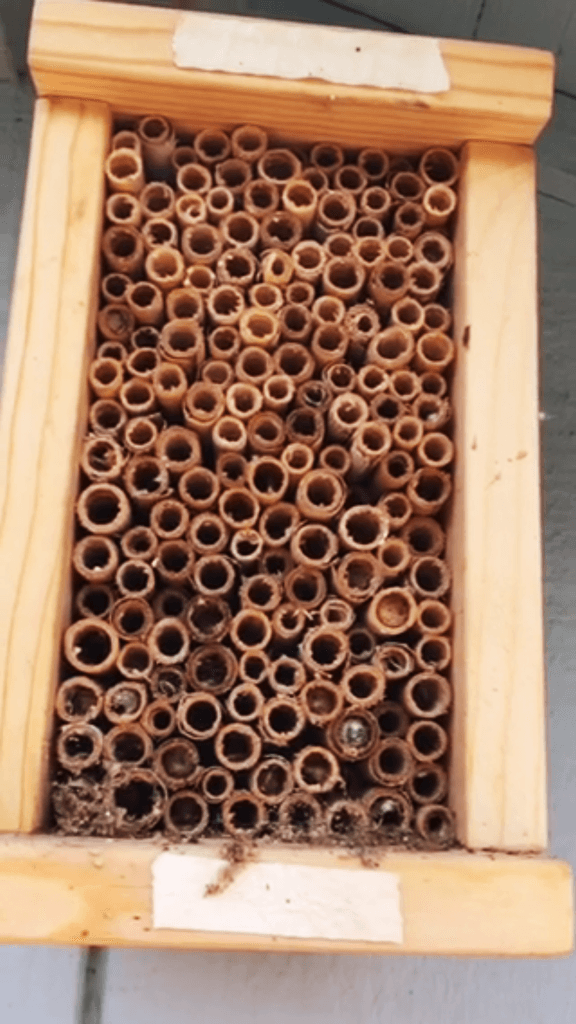 We also have a Mason Beehive that provides shelter for Mason bees. If you want more pollination, but don’t want to manage bees, a Mason beehive is perfect. You can buy a reed hive or make a hive out of a block of wood, hang it and they will come. We’ll being doing a blog piece on the benefits of Mason bees soon.
We also have a Mason Beehive that provides shelter for Mason bees. If you want more pollination, but don’t want to manage bees, a Mason beehive is perfect. You can buy a reed hive or make a hive out of a block of wood, hang it and they will come. We’ll being doing a blog piece on the benefits of Mason bees soon.Ixchel did frequent look-ins on the hive using Periscope and regularly documented her hive dives with her GoPro camera.
At the Edges
One of the core concepts of permaculture is to find form and function all the way to the edges of your space and beyond. Situated on a corner lot, we have 100+ of sidewalk-adjacent strip outside of our fence. When we moved in — all weeds, dead grass, and doggy pit stop.
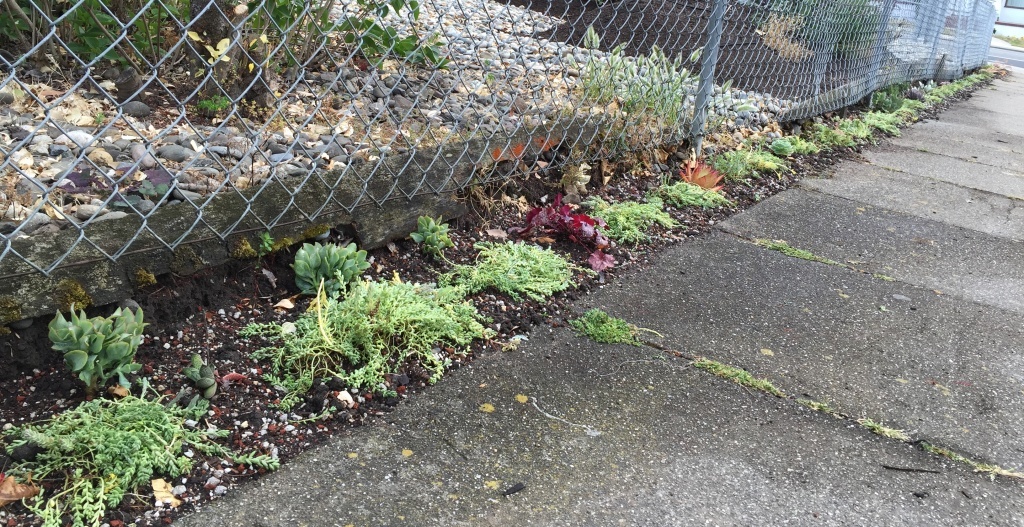 Solutions: Succulents make for wonderful, evergreen edging. You can start small, and they’ll spread and fill in like gangbusters.
Solutions: Succulents make for wonderful, evergreen edging. You can start small, and they’ll spread and fill in like gangbusters.